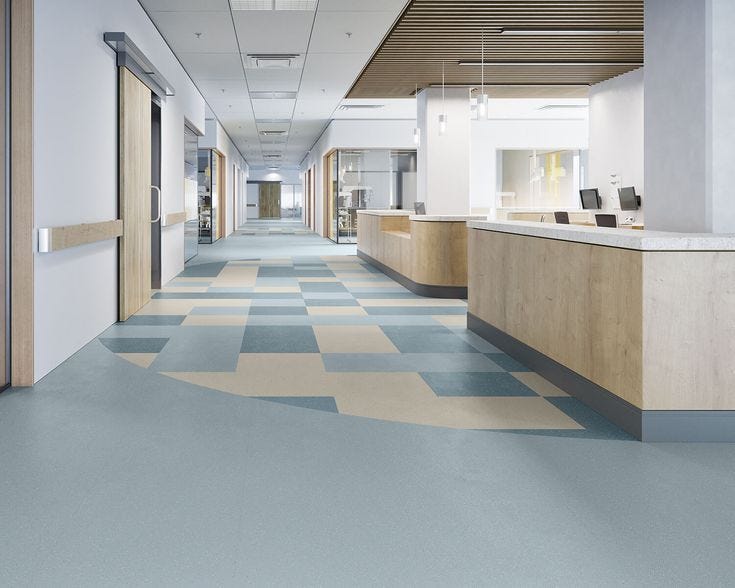Hospital Vinyl Flooring
The Ultimate Guide to Hospital Vinyl Flooring and Modern Healthcare Flooring Solutions
When it comes to designing and maintaining healthcare environments, hospital vinyl flooring stands out as one of the most reliable, hygienic, and cost-effective choices. The demands of hospitals — high foot traffic, frequent sanitization, infection control, and patient comfort — require flooring that’s both durable and adaptable. In this blog post, we’ll dive deep into the benefits of hospital vinyl flooring while naturally exploring related flooring solutions such as epoxy floor coating, terrazzo flooring, resin flooring, and epoxy basement flooring — all of which play a role in creating safe and efficient medical facilities.
What Makes Hospital Vinyl Flooring Ideal for Healthcare
Hospital vinyl flooring is engineered to meet the stringent requirements of medical settings. It’s seamless, making it easy to clean and resistant to bacteria and viruses critical for infection control. It’s also slip-resistant, offering safety for both staff and patients.
Moreover, vinyl flooring in hospitals helps reduce noise, creating a quieter, more peaceful healing environment. With a variety of colors and designs available, it also contributes to a more inviting and less clinical-looking space, which is particularly important in pediatric wards or mental health facilities.

Epoxy Floor Coating Toughness Meets Hygiene
In areas that require an extra-durable and chemical-resistant surface — like emergency rooms, surgical suites, and laboratories epoxy floor coating is often used alongside vinyl flooring. Epoxy forms a hard, non-porous surface that can withstand the harshest cleaning agents and spills, from medical fluids to industrial-strength disinfectants.
Epoxy coatings are also used to seal and protect concrete subfloors beneath vinyl, helping to prolong the lifespan of the flooring system. Thanks to its glossy finish and seamless application, epoxy is a go-to choice for maintaining hygiene and simplifying maintenance routines.
Terrazzo Flooring Durable and Stylish for Public Spaces
While hospital vinyl flooring dominates in patient and staff areas, terrazzo flooring finds its place in public lobbies, hallways, and entrances. Terrazzo, made by embedding marble or glass chips into a cement or epoxy matrix, creates a high-end appearance while remaining incredibly tough.
The main appeal of terrazzo in healthcare settings is its longevity. With proper maintenance, terrazzo flooring can last for decades without needing replacement. Its smooth surface is easy to sanitize, and custom patterns can help with wayfinding or brand identity within a hospital space.
Resin Flooring for Specialized Hospital Zones
Resin flooring, which includes both epoxy and polyurethane systems, is ideal for areas requiring a high degree of chemical and thermal resistance. Operating rooms, intensive care units, and pharmaceutical areas benefit from resin flooring’s seamless finish and exceptional durability.
Unlike traditional tile or carpet, resin floors do not have grout lines where bacteria can accumulate. They’re also compatible with underfloor heating systems, which is especially useful in rehabilitation centers or patient rooms designed for long-term comfort.
Hospitals aiming to meet strict hygiene codes often combine resin flooring with vinyl installations, depending on the room’s purpose. The transition between these surfaces can be made seamless with proper installation techniques, maintaining a smooth and safe environment.
Epoxy Basement Flooring for Utility and Storage Areas
Let’s not forget about the often-overlooked spaces in hospitals — basements, maintenance corridors, and storage rooms. These areas typically require high-performance flooring that can handle equipment traffic and resist moisture. Epoxy basement flooring is the perfect solution.
Not only is epoxy resistant to water damage and mold, but it also creates a bright, clean appearance even in less-visited areas of the hospital. This is essential in healthcare facilities, where cleanliness and safety extend to every corner of the building. The reflective surface of epoxy also helps improve visibility in low-light conditions, which can reduce accidents in utility zones.
Conclusion A Strategic Approach to Hospital Flooring
Each area in a hospital comes with its own set of challenges, and a one-size-fits-all approach to flooring simply doesn’t work. That’s why a layered strategy using different materials — starting with hospital vinyl flooring as a base and incorporating epoxy coatings, terrazzo, and resin flooring — is the best way to ensure long-lasting performance, hygiene, and safety.
Whether you’re planning a new healthcare facility or renovating an existing one, understanding the strengths of each flooring type allows you to make smarter decisions. Hospital vinyl flooring offers an optimal balance of affordability, comfort, and cleanliness, while specialized materials like epoxy floor coating and resin flooring provide added durability where it’s needed most.
Comments
Post a Comment